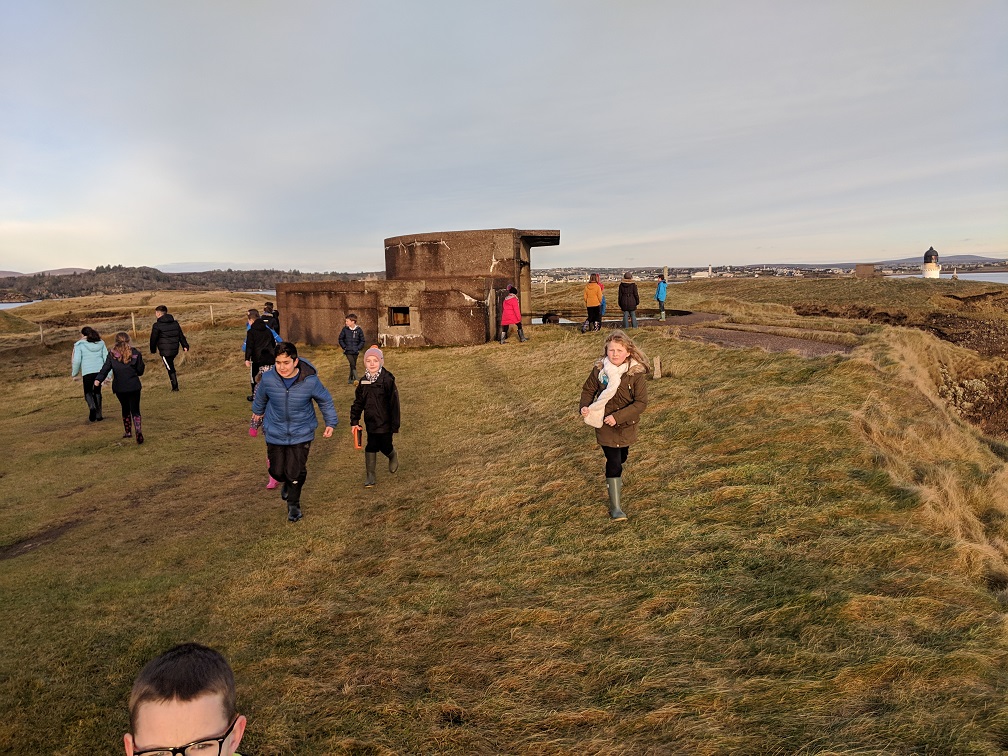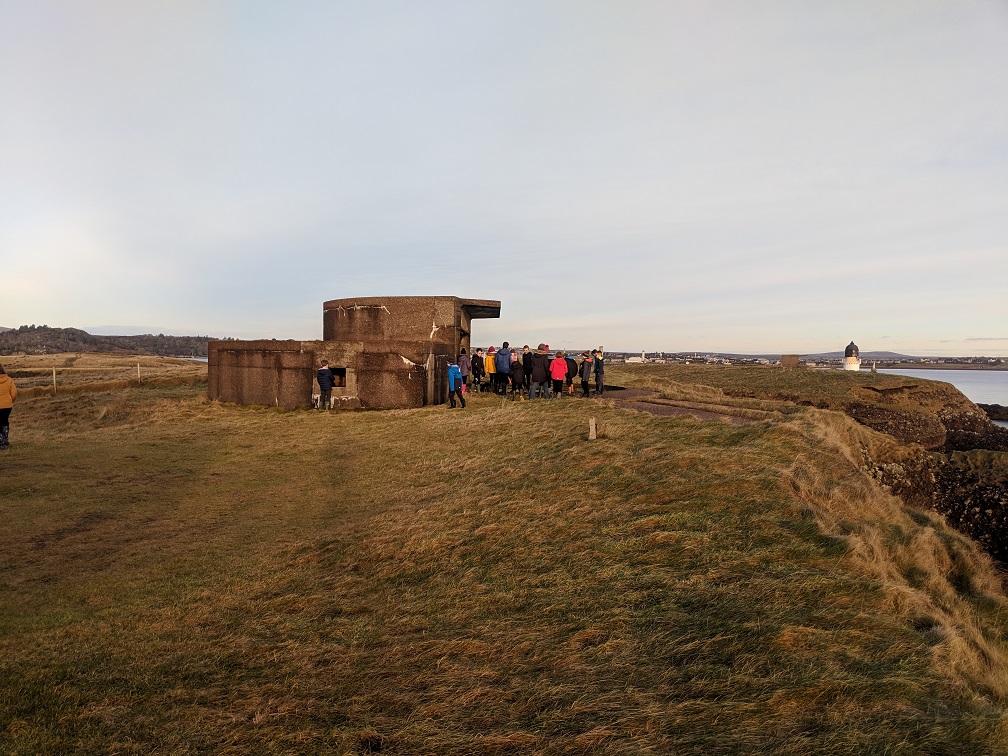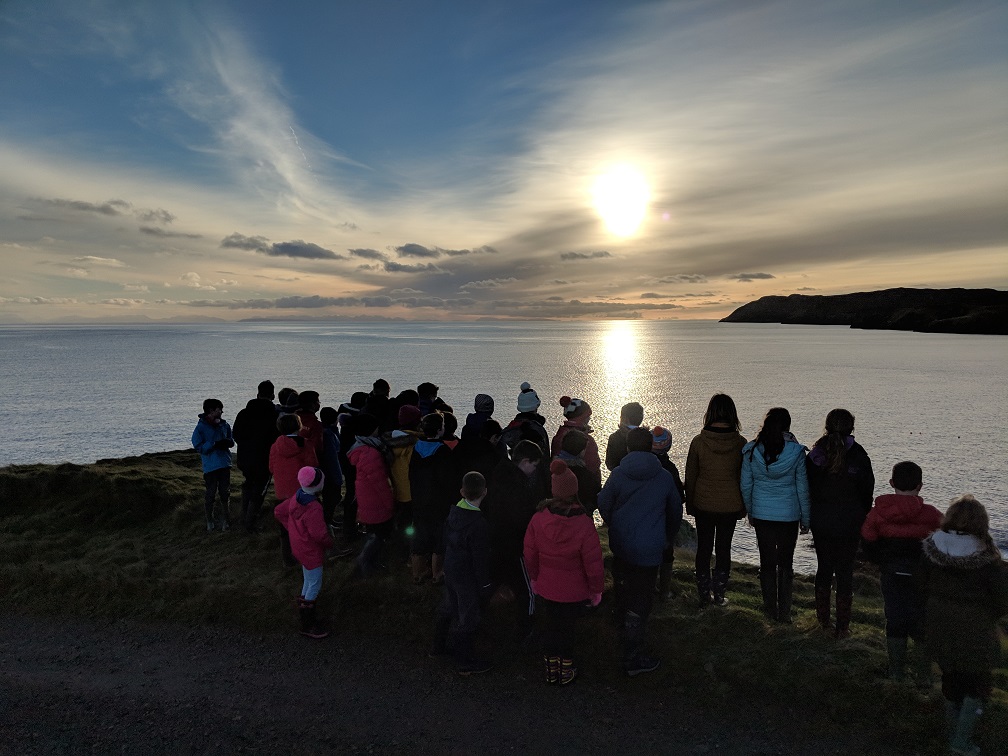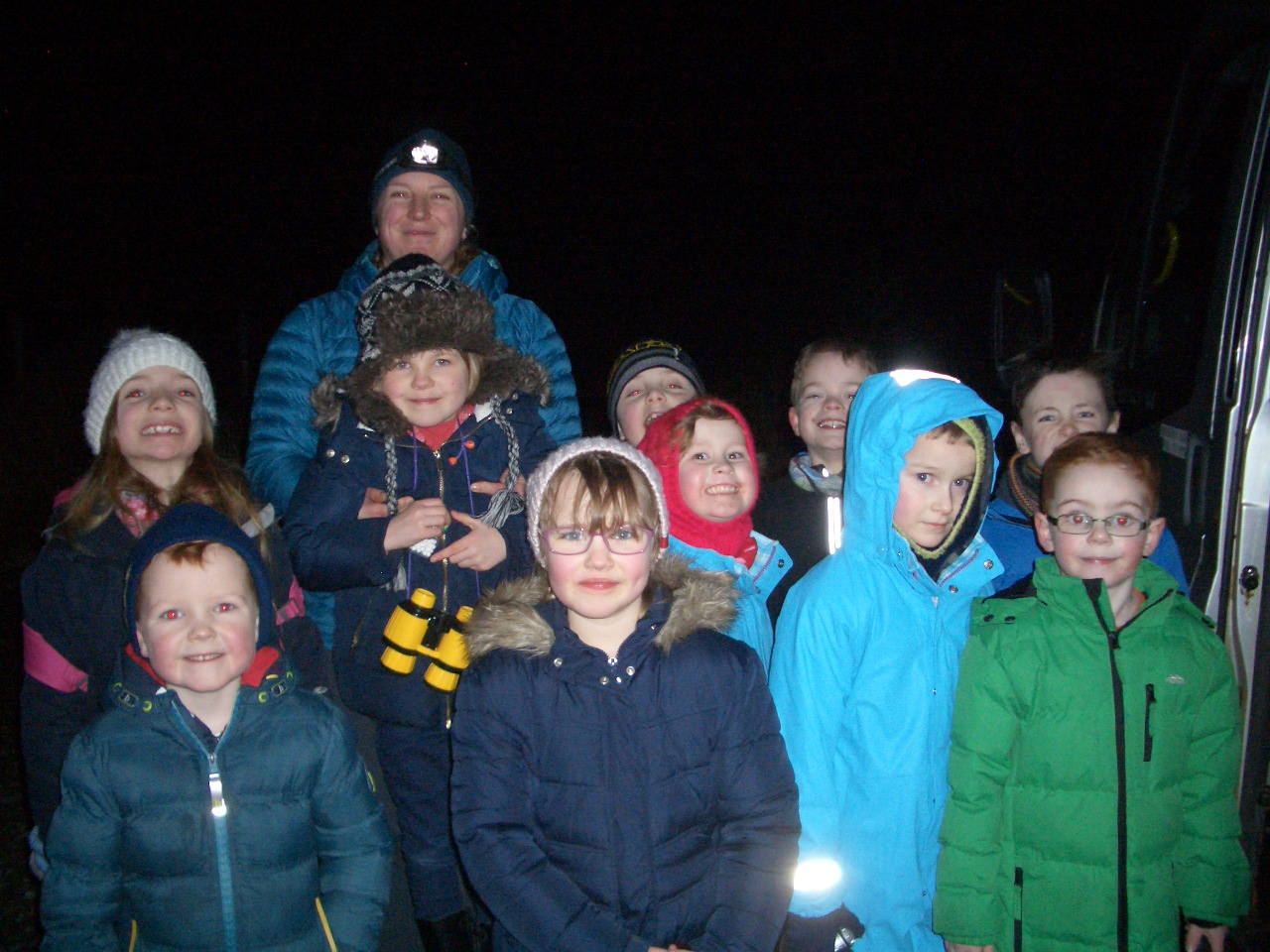Just before the end of the school term, as part of the project on the wars and into the Iolaire disaster, a trip to the gun emplacements at Arish Point was organised by Tong School. Tim went along to help and tell a few stories.

The bus dropped the classes at the carpark below the Bonny Prince Charlie cairn and they walked along to the emplacements.

The ruins of the emplacements gave a great opportunity to explore and to talk about what it must have been like to be based there on a wild winter night. We also looked across at the Beasts of Holm and talked about the Iolaire disaster.




The gun emplacements housed two 6 inch coast guns, had a watch tower and two search lights in smaller enclosures. How effective the guns would have been is questionable; when the Dutch Submarine Zeehond failed to respond to the challenges one of the guns was fired, it missed and the shell bounced over the water, embedding itself in the wall of Sandwickhill Cemetery. Much to the embarrassment of the Navy but to the huge amusement of the young people form Tong School when they heard the story.
Although the daylight at this time of year is short it does allow for some amazing skies which we took the chance to enjoy before boarding the bus to go to the museum for a visit.




















